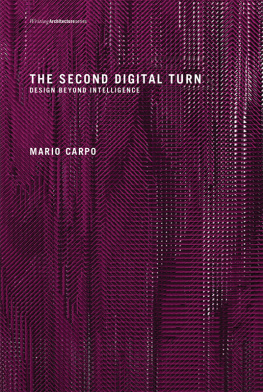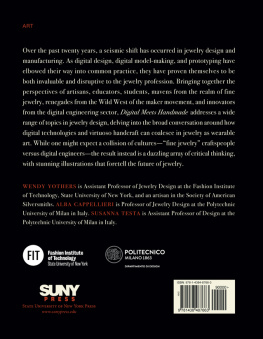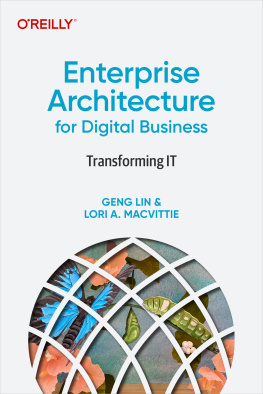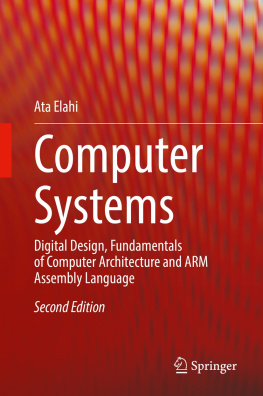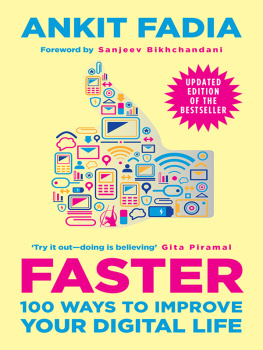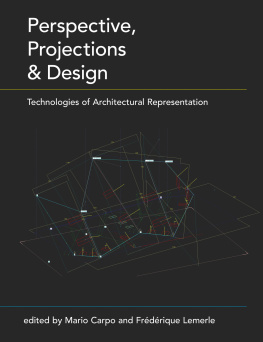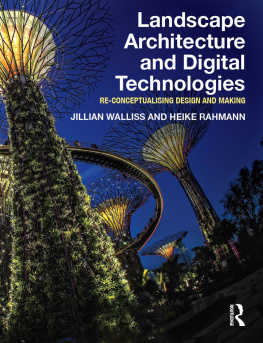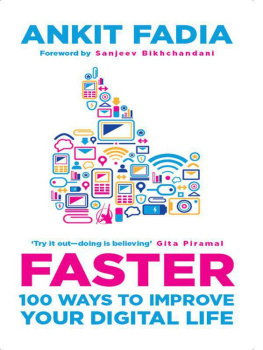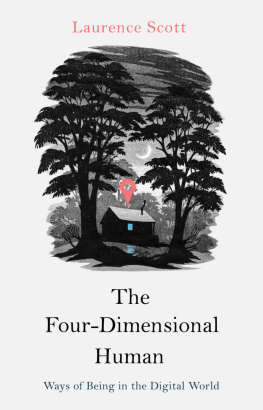Carpo - The second digital turn: design beyond intelligence
Here you can read online Carpo - The second digital turn: design beyond intelligence full text of the book (entire story) in english for free. Download pdf and epub, get meaning, cover and reviews about this ebook. City: Cambridge, year: 2017, publisher: MIT Press, genre: Romance novel. Description of the work, (preface) as well as reviews are available. Best literature library LitArk.com created for fans of good reading and offers a wide selection of genres:
Romance novel
Science fiction
Adventure
Detective
Science
History
Home and family
Prose
Art
Politics
Computer
Non-fiction
Religion
Business
Children
Humor
Choose a favorite category and find really read worthwhile books. Enjoy immersion in the world of imagination, feel the emotions of the characters or learn something new for yourself, make an fascinating discovery.
- Book:The second digital turn: design beyond intelligence
- Author:
- Publisher:MIT Press
- Genre:
- Year:2017
- City:Cambridge
- Rating:3 / 5
- Favourites:Add to favourites
- Your mark:
- 60
- 1
- 2
- 3
- 4
- 5
The second digital turn: design beyond intelligence: summary, description and annotation
We offer to read an annotation, description, summary or preface (depends on what the author of the book "The second digital turn: design beyond intelligence" wrote himself). If you haven't found the necessary information about the book — write in the comments, we will try to find it.
Carpo: author's other books
Who wrote The second digital turn: design beyond intelligence? Find out the surname, the name of the author of the book and a list of all author's works by series.
The second digital turn: design beyond intelligence — read online for free the complete book (whole text) full work
Below is the text of the book, divided by pages. System saving the place of the last page read, allows you to conveniently read the book "The second digital turn: design beyond intelligence" online for free, without having to search again every time where you left off. Put a bookmark, and you can go to the page where you finished reading at any time.
Font size:
Interval:
Bookmark:

WritingArchitecture series
A project of the Anyone Corporation; Cynthia Davidson, editor
Earth Moves: The Furnishing of Territories
Bernard Cache, 1995
Architecture as Metaphor: Language, Number, Money
Kojin Karatani, 1995
Differences: Topographies of Contemporary Architecture
Ignasi de Sol-Morales, 1996
Constructions
John Rajchman, 1997
Such Places as Memory: Poems 19531996
John Hejduk, 1998
Welcome to The Hotel Architecture
Roger Connah, 1998
Fire and Memory: On Architecture and Energy
Luis Fernndez-Galiano, 2000
A Landscape of Events
Paul Virilio, 2000
Architecture from the Outside: Essays on Virtual and Real Space
Elizabeth Grosz, 2001
Public Intimacy: Architecture and the Visual Arts
Giuliana Bruno, 2007
Strange Details
Michael Cadwell, 2007
Histories of the Immediate Present: Inventing Architectural Modernism
Anthony Vidler, 2008
Drawing for Architecture
Lon Krier, 2009
Architectures Desire: Reading the Late Avant-Garde
K. Michael Hays, 2009
The Possibility of an Absolute Architecture
Pier Vittorio Aureli, 2011
The Alphabet and the Algorithm
Mario Carpo, 2011
Oblique Drawing: A History of Anti-Perspective
Massimo Scolari, 2012
A Topology of Everyday Constellations
Georges Teyssot, 2013
Project of Crisis: Manfredo Tafuri and Contemporary Architecture
Marco Biraghi, 2013
A Question of Qualities: Essays in Architecture
Jeffrey Kipnis, 2013
Noahs Ark: Essays on Architecture
Hubert Damisch, 2016
The Second Digital Turn: Design Beyond Intelligence
Mario Carpo, 2017
Mario Carpo
The MIT Press
Cambridge, Massachusetts
London, England
2017 Massachusetts Institute of Technology
All rights reserved. No part of this book may be reproduced in any form by any electronic or mechanical means (including photocopying, recording, or information storage and retrieval) without permission in writing from the publisher.
This book was set in Filosofia OT and Trade Gothic LT Std by Toppan Best-set Premedia Limited. Printed and bound in the United States of America.
Library of Congress Cataloging-in-Publication Data
Names: Carpo, Mario, author.
Title: The second digital turn : design beyond intelligence / Mario Carpo.
Description: Cambridge, MA : The MIT Press, 2017. | Series: Writing
architecture | Includes bibliographical references and index.
Identifiers: LCCN 2016054313 | ISBN 9780262534024 (pbk. : alk. paper)
eISBN 9780262341233
Subjects: LCSH: Architecture and technology. | Architecture--Information
technology. | Architecture--Computer-aided design.
Classification: LCC NA2543.T43 C37 2017 | DDC 720.72--dc23 LC record available at https://lccn.loc.gov/2016054313
ePub Version 1.0
While researching and writing this book I had to dabble in an inordinate number of disciplines and subjects, including some that are manifestly outside of my expertise. I am aware of the risks this entails; specialists in each of those fields will no doubt find errors of all sorts. As often happens, I could only outline a more general picture to the detriment of local detail; going against the logic of the artificial intelligence I try to describe, I was often obliged to merge, neglect, or compress plenty of data in order to allow some visible patterns to emerge. I am grateful in advance to the scholars and colleagues who will correct my arguments and flag my simplifications and omissions. I am also thankful to the many colleagues and friends with whom I discussed the ideas in this book over the course of the last three years, and who generously offered tips and advice: in particular, Alisa Andrasek, Marjan Colletti, Marcos Cruz, Christian Girard, Jeff Huang, Achim Menges, Marco Panza, Gilles Retsin, Jenny Sabin, Patrik Schumacher, Axel Sowa, and the faculty and students at the B-Pro program at the Bartlett School of Architecture, with whom I had many fruitful sessions and discussions. Almost weekly discussions with Frdric Migayrou left an evident trace throughout chapter 2, and Philippe Morel generously shared technical and mathematical insights, particularly on the history of spline making. A grant from the Bartlett School of Architecture allowed me to purchase some reproduction rights, and to hire Alexandra Vougia as a research assistant and Tina Di Carlo as a copy editor during the first phase of writing. Cynthia Davidson guided all stages of the making of the book, from conception and development to editing and delivery, with her usual flair and professionalism.
London, September 2016
Architects tend to be late in embracing technological change. This chronic belatedness started at the very beginning of the Western architectural tradition: Vitruviuss De Architectura, one of the most influential books of all time, was composed in the early years of the Roman Empire, but it described a building technology that, by the time Vitruvius put it into writing, was already a few centuries old. Vitruvius refers for the most part to trabeated, post-and-lintel structures, and he doesnt even mention arches or vaults, which were already a major achievement of Roman engineering. When Vitruvius mentions bricks, he seems to have in mind the primitive sun-dried brick of the early Mediterranean and Mesopotamian traditions; yet when writing his treatiseas a retired military engineer living on a pension from the Roman army and a grant from the emperors sisterhe was probably sitting in a modern Roman house made of solid bricks baked in a furnace. Why did Vitruvius choose to celebrate an obsolete way of building, and concoct the fiendish plan to bequeath to posterity a building technology that nobody, at the time of his writing, was using any more? We dont know. But perhaps it should come as no surprise that his treatise soon fell into oblivion, only to be revived fifteen centuries later by the Humanists of the Italian Renaissance, who, of course, could not make heads or tails of Vitruviuss often opaque technological and scientific lore. The most alert among Vitruviuss Renaissance readers did remark, meekly, that Vitruviuss treatise, and the extant Roman ruins they could still peruse all over Italy, did not seem to match.
But again, the technological ambitions of most Renaissance architects were simple at best, and early modern classicists did not need much technology to build in the classical styles they cherished. When the Renaissance came, European architecture had just gone through an age of astounding technical renewal: the high rises of Gothic spires and pinnacles were so daring and original that we still do not know how they were built (and we would struggle to rebuild them if we had to use the tools and materials of their time). But when Renaissance classicists and their Italianate style took over, the technical skills of the medieval master builders were abandoned, and early modern architecture fell back on the good old post-and-lintel structures of classical antiquity, this time with arches, vaults, and domes added when needed.
For centuries, and with few exceptions, modern classicism continued to stifle technological innovation in building: in the nineteenth century, while the Industrial Revolution was changing society, the world, and the way we build, architects mostly used the new industrial materials to imitate the shapes and styles of classical antiquity (and, at times, of other historical periods too). Even the golden age of twentieth-century modernism, when architects finally decided to come to terms with the industrial world, waswhen all the pizzazz is taken awaya sadly
Next pageFont size:
Interval:
Bookmark:
Similar books «The second digital turn: design beyond intelligence»
Look at similar books to The second digital turn: design beyond intelligence. We have selected literature similar in name and meaning in the hope of providing readers with more options to find new, interesting, not yet read works.
Discussion, reviews of the book The second digital turn: design beyond intelligence and just readers' own opinions. Leave your comments, write what you think about the work, its meaning or the main characters. Specify what exactly you liked and what you didn't like, and why you think so.

